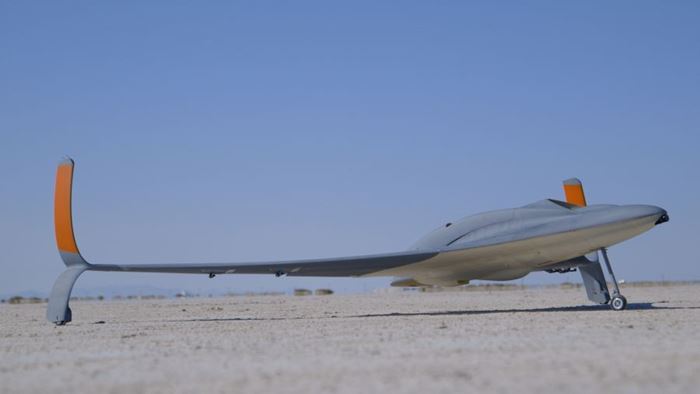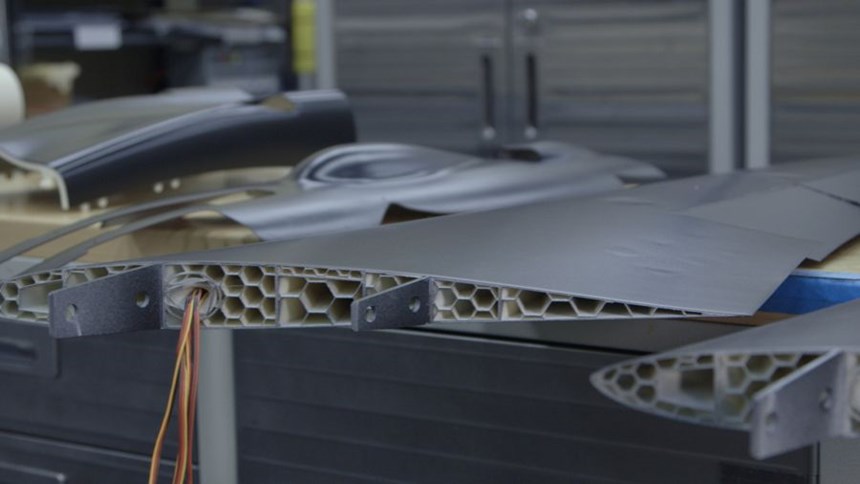UAV Takes Flight with 80 Percent 3D-Printed Parts
A collaborative project leveraged FDM and other additive technologies to design and build an unmanned aerial vehicle.
Share
Read Next
A joint project conducted by Stratasys and Aurora Flight Sciences has produced a jet-powered unmanned aerial vehicle (UAV) almost entirely via 3D printing. A primary goal of the project was to demonstrate how quickly the collaborators could move through designing and building a flight-capable UAV, but the results also serve as a proof of concept for the benefits of additive manufacturing in aerospace, where weight reduction is key. The finished aircraft, which features a 9-foot wingspan and weighs only 33 pounds, is 80 percent 3D-printed by weight. It is believed to be one of the largest and most complex 3D-printed UAVs ever produced, as well as one of the fastest, with a top speed faster than 150 mph.
The UAV’s light weight and speed are made possible by the materials and additive processes used to build it. Most of the aircraft was produced with Stratasys’ fused deposition modeling (FDM) process from ASA thermoplastic, which has good bridging properties meaning that less interior fill is necessary on hollow parts. The wings of the UAV, for example, were built via FDM with a honeycomb structure inside to provide strength (see the second photo above). Where FDM wasn’t possible, the project team incorporated other additive processes. The thrust vectoring exhaust nozzle, which must withstand extreme heat, was built from Inconel via direct metal laser sintering (DMLS), for example.
Watch the video below for more detail on the UAV’s development and to see it in action:
Related Content
-
Aluminum Gets Its Own Additive Manufacturing Process
Alloy Enterprises’ selective diffusion bonding process is specifically designed for high throughput production of aluminum parts, enabling additive manufacturing to compete with casting.
-
How GM Is Investing in Additive and EVs
People within the automaker aren’t just working with additive, they are actively promoting it to their colleagues throughout the organization.
-
Multimaterial 3D Printing Enables Solid State Batteries
By combining different 3D printing processes and materials in a single layer, Sakuu’s Kavian platform can produce batteries for electric vehicles and other applications with twice the energy density and greater safety than traditional lithium-ion solutions.

.jpg;width=70;height=70;mode=crop)












